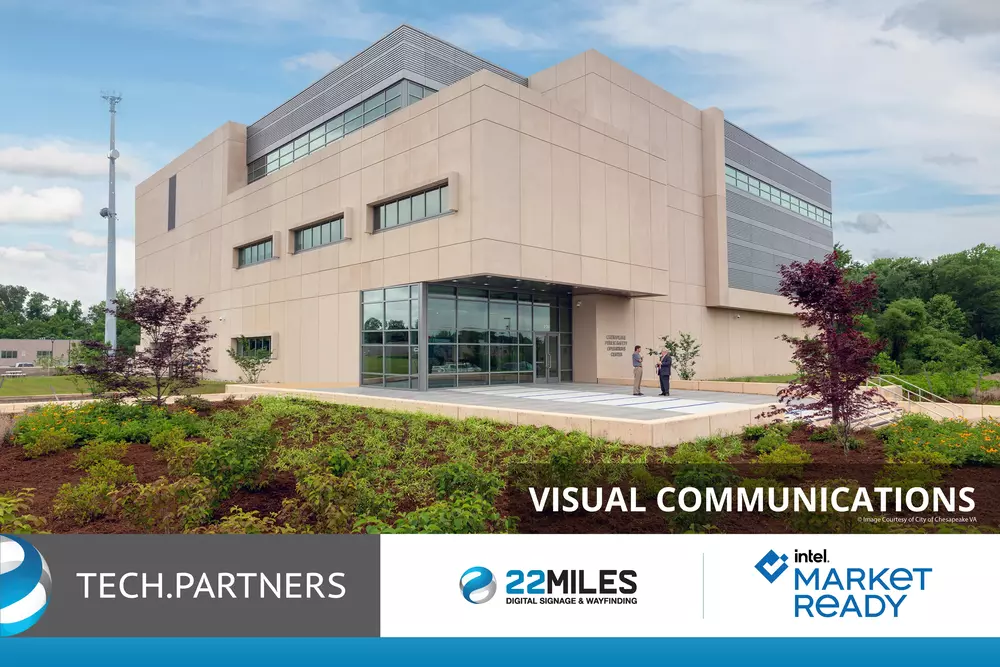March 12, 2024
The shift from IPv4 to IPv6 has been a hot topic for government agencies given the 2021 mandate by the General Services Administration (GSA) and the Federal Energy Regulatory Commission (FERC) emphasizing IPv6 compliance by the end of 2023. That deadline has come and passed.
For government agencies, transitioning to IPv6 is a must, but many agencies are still behind. Failure to transition to IPv6 could result in security vulnerabilities, limited connectivity, interoperability issues, compliance concerns, and technological obsolescence, leading to potential fines, communication difficulties, and outdated systems.
Here’s where 22Miles steps in – your go-to expert in digital signage, wayfinding, and AI solutions. We’re not just about flashy displays; we’re committed to ensuring your systems are IPv6-compatible, keeping you seamlessly connected and secure at all times. So, let’s dive into the differences between IPv4 vs IPv6 so you can navigate the transition with ease.
IPv4 vs IPv6 for Government Agencies
IPv4, the fourth version of the Internet Protocol, has been the primary communication protocol since its inception in the early days of the Internet. Developed in the 1980s, IPv4 utilizes a 32-bit address scheme, allowing for approximately 4.3 billion unique addresses.
Despite its widespread adoption, the limited address space of IPv4 has become a significant challenge in the face of expanding internet usage and the proliferation of connected devices. IPv6, the latest iteration of the Internet Protocol, was introduced to address the limitations of IPv4. Launched in the late 1990s, IPv6 employs a 128-bit address scheme, offering an exponentially larger pool of addresses, totaling approximately 340 undecillion.
The expanded address space of IPv6 not only accommodates the growing number of devices but also enables improved scalability and network efficiency. In fact, as of 2018, 80% of smartphones in the US use IPv6, further highlighting its importance and widespread adoption. Additionally, IPv6 incorporates built-in security features, such as IPsec, enhancing network security compared to IPv4.
Even with these benefits, the transition from IPv4 to IPv6 has been gradual, with many organizations, including government agencies, still lagging – don’t let your organization be one of them.
The Key Differences Between IPv4 and IPv6
IPv6, the sixth iteration of the Internet Protocol, was developed to address the shortcomings of IPv4, particularly in terms of address space and security. Let’s compare IPV4 vs IPv6 for your government agency’s needs:
Address Space:
- IPv4: Limited to 32 bits, resulting in approximately 4.3 billion addresses.
- IPv6: Utilizes 128 bits, allowing for approximately 340 undecillion unique addresses, ensuring an ample supply for future growth.
Address Format:
- IPv4: Expressed in decimal format separated by periods (e.g., 192.0.2.1).
- IPv6: Represented in hexadecimal format separated by colons (e.g., 2001:0db8:85a3:0000:0000:8a2e:0370:7334).
Security Features:
- IPv4: Relies on additional protocols (e.g., IPsec) for secure communication, often requiring manual configuration.
- IPv6: Built-in support for IPsec, enhancing security without the need for additional configurations, thereby simplifying implementation.
Autoconfiguration:
- IPv4: Requires manual configuration or DHCP (Dynamic Host Configuration Protocol) for address assignment.
- IPv6: Incorporates stateless address autoconfiguration (SLAAC), enabling devices to automatically generate and configure IPv6 addresses, reducing administrative overhead.
QoS Support:
- IPv4: Limited support for Quality of Service (QoS) mechanisms, impacting network performance and reliability.
- IPv6: Enhanced QoS support, facilitating prioritization and efficient handling of network traffic, ensuring optimal performance for critical applications.
Overall, IPv6 offers several technical advantages over IPv4, including a larger address space, improved security, simplified network configuration, and better support for emerging technologies. As the internet continues to evolve and the number of connected devices grows, IPv6 provides a more scalable and robust foundation for future network growth and innovation.
The Advantages of IPv6 for Government Agencies
The General Services Administration (GSA) mandate stands as a significant directive urging government agencies to transition to IPv6. As a key regulatory body overseeing federal procurement and technology standards, the GSA plays a pivotal role in shaping the digital landscape for government entities.
This mandate catalyzes agencies to prioritize IPv6 adoption, aligning with broader initiatives aimed at enhancing cybersecurity, promoting interoperability, and future-proofing digital systems.
IPv6 offers several advantages over IPv4, which is why it’s considered an improvement for internet protocols:
Larger Address Space
IPv6 provides a significantly larger address space compared to IPv4. While IPv4 uses 32-bit addresses, IPv6 uses 128-bit addresses. This allows for a virtually unlimited number of unique IP addresses, ensuring that every device can have its own unique identifier on the internet, which is crucial as the number of internet-connected devices continues to grow.
Address Auto-Configuration
IPv6 includes built-in support for address auto-configuration, making it easier to set up and manage networks. Devices can automatically generate their IP addresses without requiring manual configuration or the use of DHCP (Dynamic Host Configuration Protocol), simplifying network administration.
Better Security
IPv6 includes built-in support for IPsec (Internet Protocol Security), which provides authentication and encryption for network communications. While IPsec can be used with IPv4, it is optional and often not widely implemented. With IPv6, IPsec is an integral part of the protocol, enhancing security for internet communications.
Efficient Routing and Packet Processing
IPv6 includes features designed to improve routing efficiency and reduce the overhead associated with packet processing. This can lead to improved network performance and scalability, particularly in large-scale deployments.
Improved Quality of Service (QoS)
IPv6 includes support for more efficient handling of network traffic, including improved support for Quality of Service (QoS) mechanisms. This allows for better prioritization of network traffic and can help ensure that critical applications receive the necessary bandwidth and resources.
Simplified Header Structure
IPv6 simplifies the header structure compared to IPv4, which can lead to more efficient packet processing and routing. This can help reduce network overhead and improve overall network performance.
By embracing IPv6 vs IPv4, organizations can ensure the continued growth and innovation of their digital infrastructure, laying the foundation for a resilient, secure, and interconnected future. Moreover, with regulatory bodies and industry standards increasingly mandating IPv6 compliance, organizations that fail to adopt IPv6 risk falling behind technologically and facing compatibility issues in the rapidly evolving digital landscape. Therefore, adopting IPv6 is not just a matter of necessity but a strategic imperative for organizations seeking to thrive in the digital age.
Addressing IPv6 Protocol Requirements with 22Miles Solutions
22Miles is a leading provider of digital signage, wayfinding, and AI solutions tailored to meet the diverse needs of government agencies. Our comprehensive suite of products encompasses interactive kiosks, video walls, mobile applications, and AI-driven content management systems (CMS). With a focus on user experience, accessibility, and cutting-edge technology, 22Miles empowers government agencies to enhance communication, streamline navigation, and deliver dynamic content in any environment.
In response to the mandate for IPv6 compliance by government agencies, 22Miles has proactively ensured that our CMS platform fully aligns with IPv6 protocol standards. Our CMS infrastructure has been meticulously designed to support IPv6 addressing, enabling seamless integration into IPv6-enabled networks without compromising performance or security. Whether deploying digital signage displays in government offices, public facilities, or outdoor environments, 22Miles CMS offers robust features for content creation, scheduling, and management while adhering to the latest IPv6 protocols.
With 22Miles, government agencies can confidently embrace IPv6 technology, knowing that our solutions are optimized to meet the highest standards of compatibility, reliability, and scalability.
Strategies for Overcoming IPv6 Transition Challenges
The transition to IPv6 presents both challenges and opportunities for government agencies, requiring careful planning, expertise, and support. As government agencies navigate the complexities of the IPv6 transition, 22Miles serves as a trusted partner, providing expertise, guidance, and tailored solutions to facilitate a smooth migration.
Our team of specialists works closely with agencies to assess their specific requirements, address concerns, and develop customized strategies for IPv6 adoption. Leveraging our deep understanding of both digital signage technology and IPv6 protocols, we offer comprehensive support throughout the transition process, from planning and implementation to ongoing maintenance and support, enabling agencies to modernize their infrastructure while ensuring compliance with IPv6 mandates. With a proven track record of success and a commitment to excellence, 22Miles stands ready to empower government agencies to embrace IPv6 technology with confidence and efficiency.
To learn more about how 22Miles can assist your agency in navigating the IPv6 transition and unlocking the full potential of digital signage technology, book a demo with us today.




